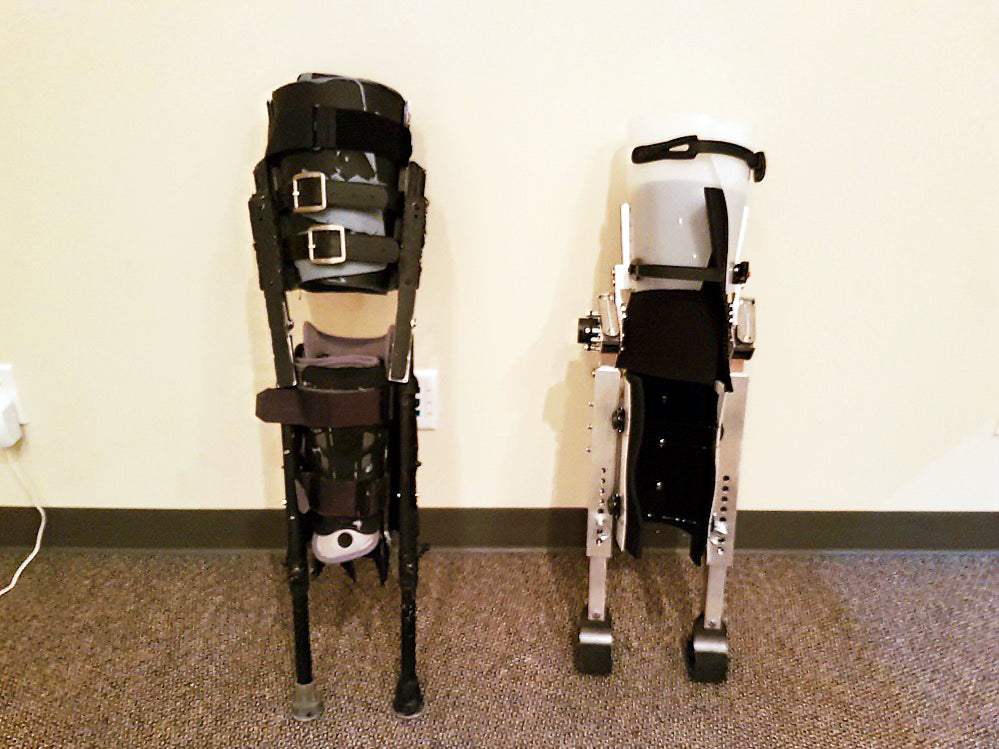Journey Part 3: The Birth of the XLEG
AFTER 13 SURGERIES ON MY LEG, CRUTCHES DIDN'T GIVE ME THE MOBILITY I NEEDED.
Looking for something better
Reid Robinson sketched the first version of the XLEG in a hospital bed after surgery number 10. He wasn't feeling hopeful about the longterm success of yet another surgery and was looking for a way to walk. After searching high and low for a device similar to the XLEG without any success, he built it.
It started in my garage
“The creation of the first XLEG started in my garage. I purchased an aluminum welder and taught myself how to weld aluminum with the help of manyYou Tubevideos and built the first prototype of the XLEG while limping around in just under 3 weeks.” – Reid Robinson
Patent filed
Realizing that there was nothing available like the XLEG, Reid searched the public patent databases and came to find that this design had not been patented either. So he contacted a patent agent and began filing the Canadian and US patents. Since then Reid has been granted the Canadian patent (March 2018) and has patent pending in the US and Europe (PCT filed in Feb. 2017, actionable until Dec. 2018).
The XLEG was born
This was not a quick process. Inspired by Reid's original garage-built prototype, the design developed over years of consultations with medical professionals and biomedical engineers, beta testing, and a certain element of trial and error. The current version is now a medically certified, light-weight, fully adjustable device made of high grade components.
Robinson Exotech Corp. August 2016
In August of 2016, Robinson Exotech Corp was opened for the purpose of bringing the XLEG to market. In the 18 months that followed, Reid received over $115,000 in government grants through Alberta Innovates that has gone towards the development and enhancements seen in the current XLEG.
Market for the XLEG
Long term use: There are over 7 million people in Canada and the US that use mobility assistance devices on an ongoing daily basis which includes canes, walkers, wheelchairs and crutches.
Short term use: Each year there are over 1 million people in Canada and the US that experience a fracture of their foot, ankle, or tibia/fibula. There is a large percentage of these people that are required to be non-weight bearing throughout the course of treatment.


